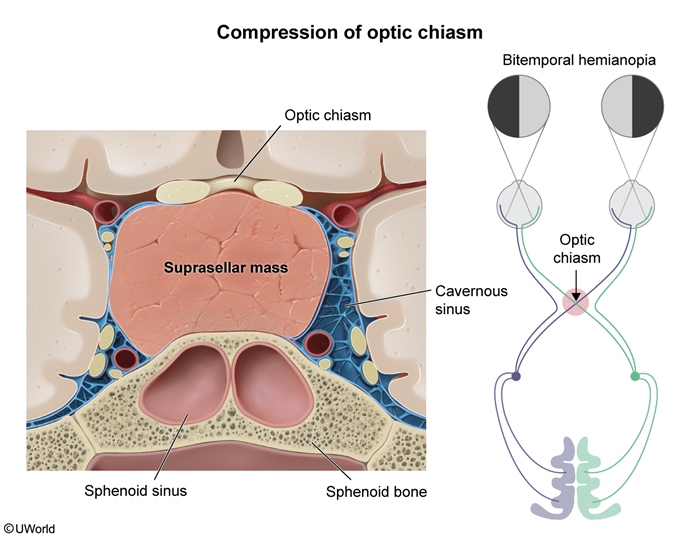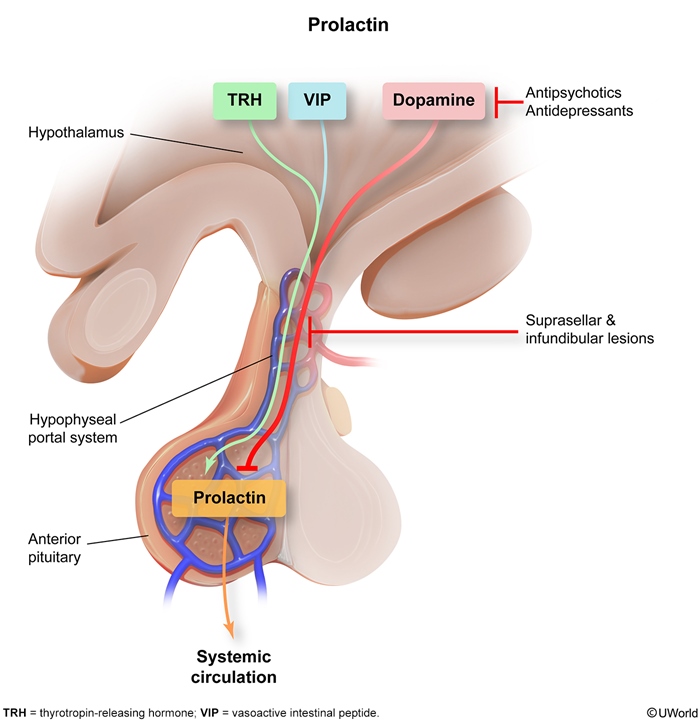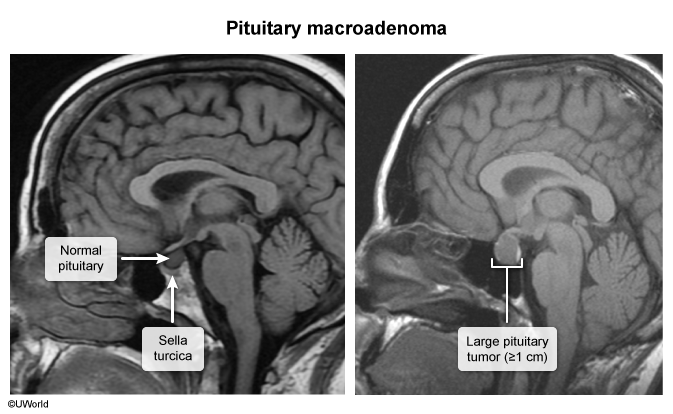Pituitary Tumors
Article Sections
Introduction
Pituitary tumors (and other suprasellar masses) typically present in 1 of 3 ways:
- Mass effects (eg, neurologic manifestations) of the tumor
- Endocrine effects (eg, hormonal manifestations) of the tumor
- Incidental findings on imaging
The most common types of pituitary tumors are pituitary adenomas (also called pituitary neuroendocrine tumors). These are neoplasms arising from the hormone-secreting cells of the anterior pituitary gland; they are classified as functioning or nonfunctioning (ie, do not secrete hormones). Other causes of sellar masses include benign tumors (eg, craniopharyngioma), malignant tumors (primary or metastatic), pituitary hyperplasia, and miscellaneous other lesions (eg, cysts, abscesses).
This article provides a conceptual approach to pituitary tumors, with a focus on pituitary adenomas; other types of suprasellar masses are discussed in the differential diagnosis section.
Continue Learning with UWorld
Get the full Pituitary Tumors article plus rich visuals, real-world cases, and in-depth insights from medical experts, all available through the UWorld Medical Library.
Figures




Images
